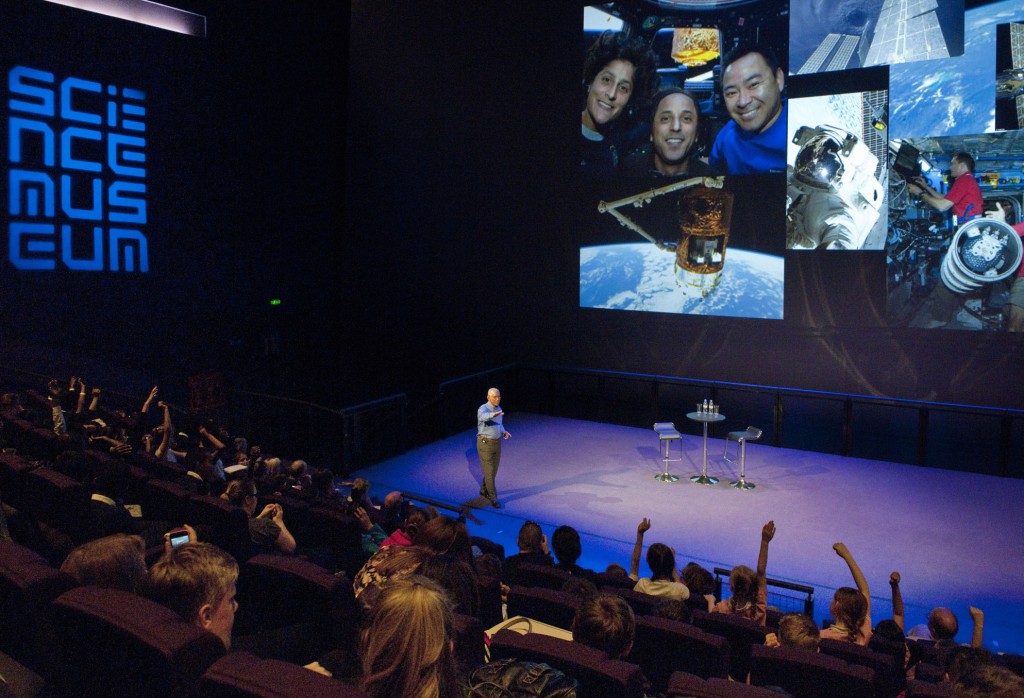NASA Administrator Charlie Bolden has told hundreds of young visitors to the Science Museum of his strong belief that extraterrestrial life will be found.

The Shuttle astronaut, now head of the world’s largest civil space agency, said “we will someday find other forms of life or a form of life, if not in our solar system then in some other”. But in a question and answer session with children from dozens of schools he pointed out that this life was unlikely to match the alien forms the young people may have seen in sci-fi films.
Asked whether he had always dreamed of being an astronaut, Bolden replied that, as a black person growing up in South California, being an astronaut or a pilot (he also served as a naval aviator) simply wasn’t an option and urged all of the young people in the audience to dream big, work hard and not fear failure. “You can do anything you want,” he said.
After taking questions from this enthusiastic audience for an hour, Bolden was thanked by Science Museum Director, Ian Blatchford, who presented the NASA leader with a book about the museum’s forthcoming blockbuster exhibition, Cosmonauts: Birth of the Space Age.
Bolden then moved on to Engineer Your Future, the museum’s interactive exhibition for young people thinking about their futures, which had been transformed into a Sky News studio for the day. There, the eight-strong panel of Hotseat – a collaboration between Sky News and First News that enables young people to interview notable public figures – put Bolden on the spot with a series of searching questions.
Bolden rejected the suggestion that NASA was in danger of falling behind other countries in the fields of technology, space exploration and earth science. “Nasa is continuing to lead the world” he said, pointing to its partnerships with 120 countries around the world, among them the UK Space Agency. He also insisted that space didn’t need to be a point of conflict between nations, “as long as we continue to use models like the International Space Station to show that disparate nations who may not agree on everything can in fact work cooperatively in space….I think if there’s anything that deserves a Nobel peace prize, it’s the International Space Station.”
As the father of one of the children in the audience for the NASA Adminstrator’s visit to the museum, I can attest to his inspirational impact on young and old. “That astronaut is awesome,” she told me, the highest compliment from an eight-year-old. His appearance followed a similarly stirring visit to the museum by NASA’s Chief Scientist, Dr Ellen Stofan. We look forward to NASA’s next trip to the U.K.